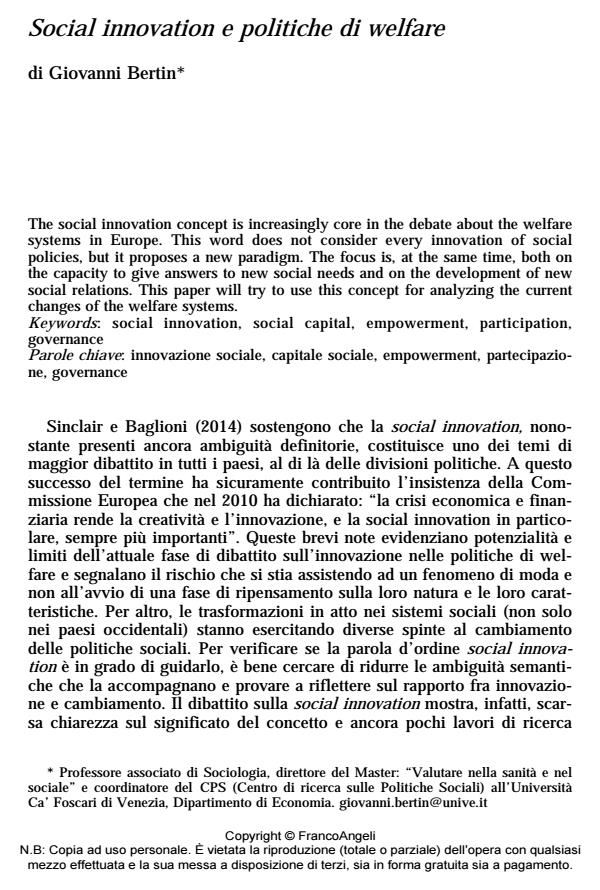Social innovation and welfare policies
Journal title SALUTE E SOCIETÀ
Author/s Giovanni Bertin
Publishing Year 2015 Issue 2015/1
Language Italian Pages 14 P. 37-50 File size 53 KB
DOI 10.3280/SES2015-001004
DOI is like a bar code for intellectual property: to have more infomation
click here
Below, you can see the article first page
If you want to buy this article in PDF format, you can do it, following the instructions to buy download credits

FrancoAngeli is member of Publishers International Linking Association, Inc (PILA), a not-for-profit association which run the CrossRef service enabling links to and from online scholarly content.
The social innovation concept is increasingly core in the debate about the welfare systems in Europe. This word does not consider every innovation of social policies, but it proposes a new paradigm. The focus is, at the same time, both on the capacity to give answers to new social needs and on the development of new social relations. This paper will try to use this concept for analyzing the current changes of the welfare systems.
Keywords: Social innovation, social capital, empowerment, participation, governance
- Trade unions and employers associations: a new welfare model Daniele Cattaneo, Filippo Monge, in SOCIOLOGIA DEL LAVORO 147/2017 pp.220
DOI: 10.3280/SL2017-147012
Giovanni Bertin, Social innovation e politiche di welfare in "SALUTE E SOCIETÀ" 1/2015, pp 37-50, DOI: 10.3280/SES2015-001004